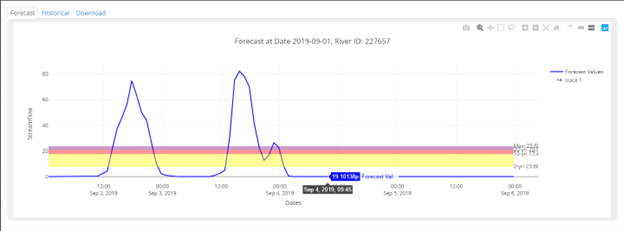Your cart is currently empty!

How Tethys Platform Supports Adaptable Environmental Solutions
—
Environmental challenges often require customized solutions. A flood prediction system designed for the steep Himalayan watersheds may require adaptation before it can serve the expansive river basins of West Africa. A drought monitoring tool developed for agricultural regions needs different metrics when applied to urban water supply management.
This diversity of environmental contexts creates a challenge for Earth scientists: how to develop solutions that address specific local needs while leveraging scientific understanding and technical approaches. Tethys Platform addresses this challenge by providing a framework that supports customization while maintaining a foundation of shared capabilities, enabling Earth scientists to adapt applications to diverse environmental contexts without starting from scratch.
The Customization Imperative
The need for customized environmental solutions stems from multiple interconnected factors. Physical environments can differ dramatically in their characteristics and processes. Organizations managing environmental resources operate under different frameworks, with varying mandates, capabilities, and priorities that applications must accommodate to be useful in practice.
Data availability presents another layer of complexity. The quantity, quality, and types of environmental data vary significantly across regions, requiring applications to accommodate these differences while still providing valuable insights. User capabilities also differ substantially across contexts, demanding interfaces appropriate to their technical sophistication while still delivering needed functionality. Perhaps most importantly, how information is presented, interpreted, and used varies across cultures, requiring effective applications to respect these differences in their design and implementation.
The Flash Flood Prediction Tool for Nepal illustrates how customization addresses these multifaceted challenges. Developed through collaboration between the SERVIR Hindu Kush Himalaya Initiative at ICIMOD and Brigham Young University, the tool integrates numerical weather prediction and satellite-based precipitation data to generate flood warnings specifically tailored to Nepal’s unique terrain. Rather than applying generic flood prediction approaches, the system specifically accounts for the flash flood dynamics typical in mountainous regions, where rapid rainfall runoff can quickly overwhelm river channels.
The tool’s interface reflects local needs through a color-coding system familiar to local officials and provides information about specific river segments relevant to nearby communities. This thoughtful customization ensures that warnings translate easily into appropriate local actions, demonstrating how technical sophistication must align with practical usability.

Balancing Customization and Standardization
While customization is often essential for local relevance, complete reinvention for each context would be inefficient and unsustainable. Tethys Platform addresses this challenge by providing standardized components that can be configured and combined to create customized solutions. This balanced approach enables developers to focus on adapting specific components rather than building entire systems from scratch, while standardized components benefit from wider testing and use, reducing the risk of errors when deployed in new contexts.
Updates and improvements to standard components can benefit multiple applications simultaneously, creating efficiencies that compound over time. Experience gained in one context can inform adaptations in others, creating a virtuous cycle of improvement that strengthens the entire ecosystem. This approach allows developers to create locally relevant tools without reinventing fundamental functionality, enabling the same underlying framework to be adapted for different regions with varying environmental systems and conditions.
Pathways to Customization
Tethys Platform supports multiple pathways for customizing applications to local needs, ranging from simple configuration adjustments to comprehensive source code modifications. Many applications include built-in options that allow users to adjust parameters, select data sources, or modify visualization preferences without changing underlying code. Applications built with modular architectures allow specific components to be replaced or modified while maintaining overall functionality, facilitated by the platform’s support for standardized interfaces.
Well-designed applications include defined extension points where additional functionality can be added without modifying core components, allowing applications to evolve to meet emerging needs. As an open-source platform, Tethys allows developers to modify application source code directly when other customization methods prove insufficient, ensuring that no technical barrier prevents adaptation to local requirements.
Community-Driven Adaptation
Perhaps the most powerful aspect of Tethys Platform’s support for customization comes from its community-based development model. Rather than relying on a single team to anticipate and implement all possible adaptations, the platform enables a distributed network of developers to share their innovations. This collaborative approach creates a virtuous cycle where one team’s customizations for their local context can be shared with the broader community, enabling other teams to build upon these innovations and contribute their improvements back to the community.
The GEOGLOWS initiative exemplifies this community-driven adaptation. What began as a unified streamflow forecasting approach has evolved through community contributions into a diverse ecosystem of applications serving different regions and purposes. From the GEOGLOWS Hydroviewer to regional implementations across multiple continents, the basic forecasting approach has been adapted to serve diverse hydrological contexts while maintaining scientific consistency.
Challenges and Solutions
Despite its benefits, customization presents challenges that require thoughtful management. As applications diverge to meet local needs, ensuring consistency in core functionality becomes more difficult, while supporting multiple versions requires additional resources and coordination. Ensuring that innovations developed in one context inform adaptations in others requires effective communication channels and documentation practices. Uncoordinated customization can create technical debt that complicates future maintenance and upgrades.
The Tethys community addresses these challenges through shared coding standards, documentation requirements, and communication channels that facilitate knowledge exchange. The Tethys App Store provides a central repository for applications and their variants, helping users find solutions that match their specific needs while maintaining community coordination.
Looking Forward
As environmental challenges continue to evolve, the need for customized solutions will only increase. Environmental challenges create new patterns of risk that vary across regions, while growing populations place different pressures on environmental resources in different contexts. Tethys Platform’s support for customization positions it well to address these evolving challenges by providing a flexible framework that balances standardization with adaptability.
To learn more about how Tethys Platform can support your efforts to develop customized environmental solutions, become a member of Tethys Geoscience Foundation and follow us on LinkedIn for updates and join our growing community of innovators working to address environmental challenges across diverse contexts worldwide.

Leave a Reply